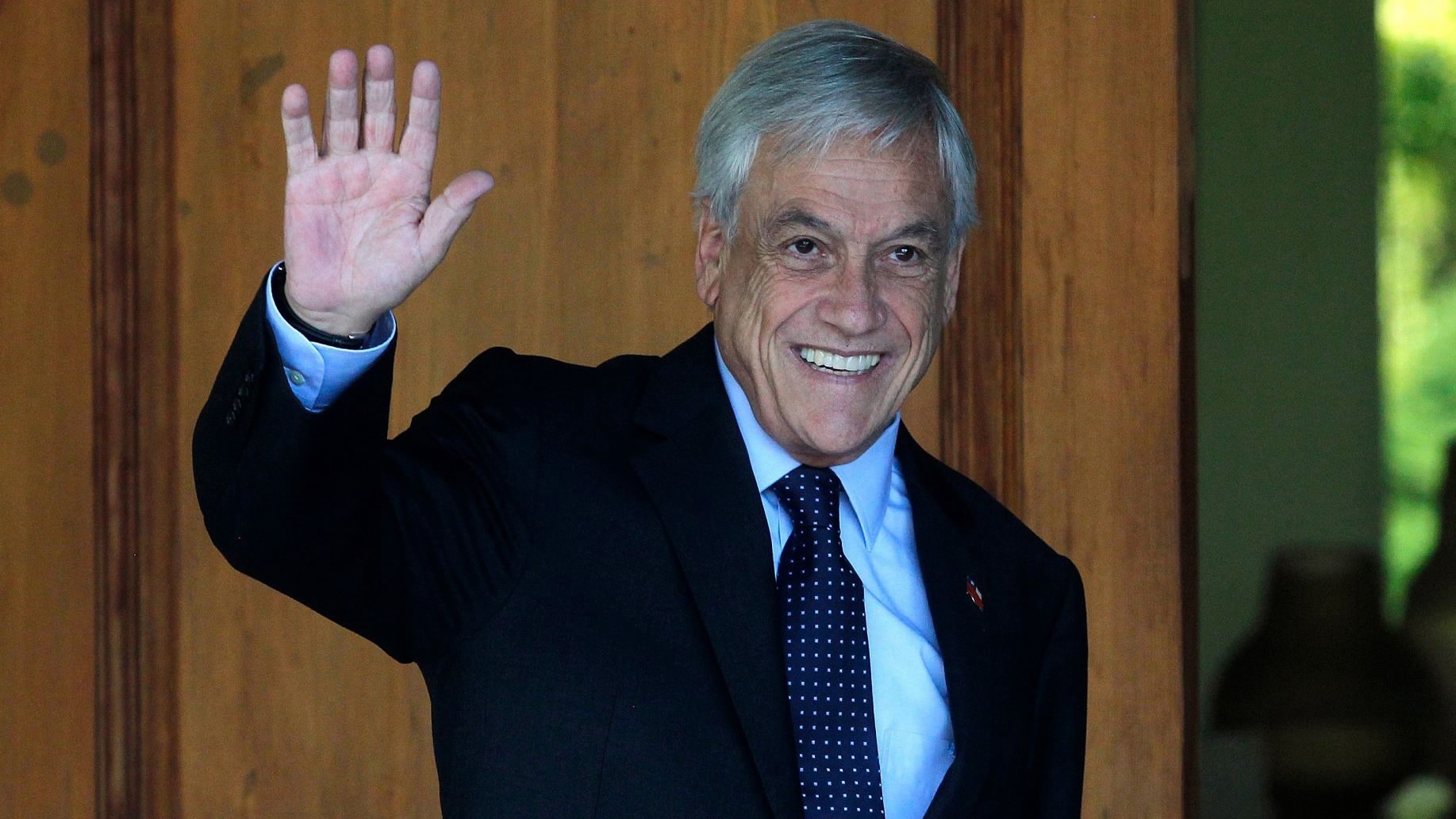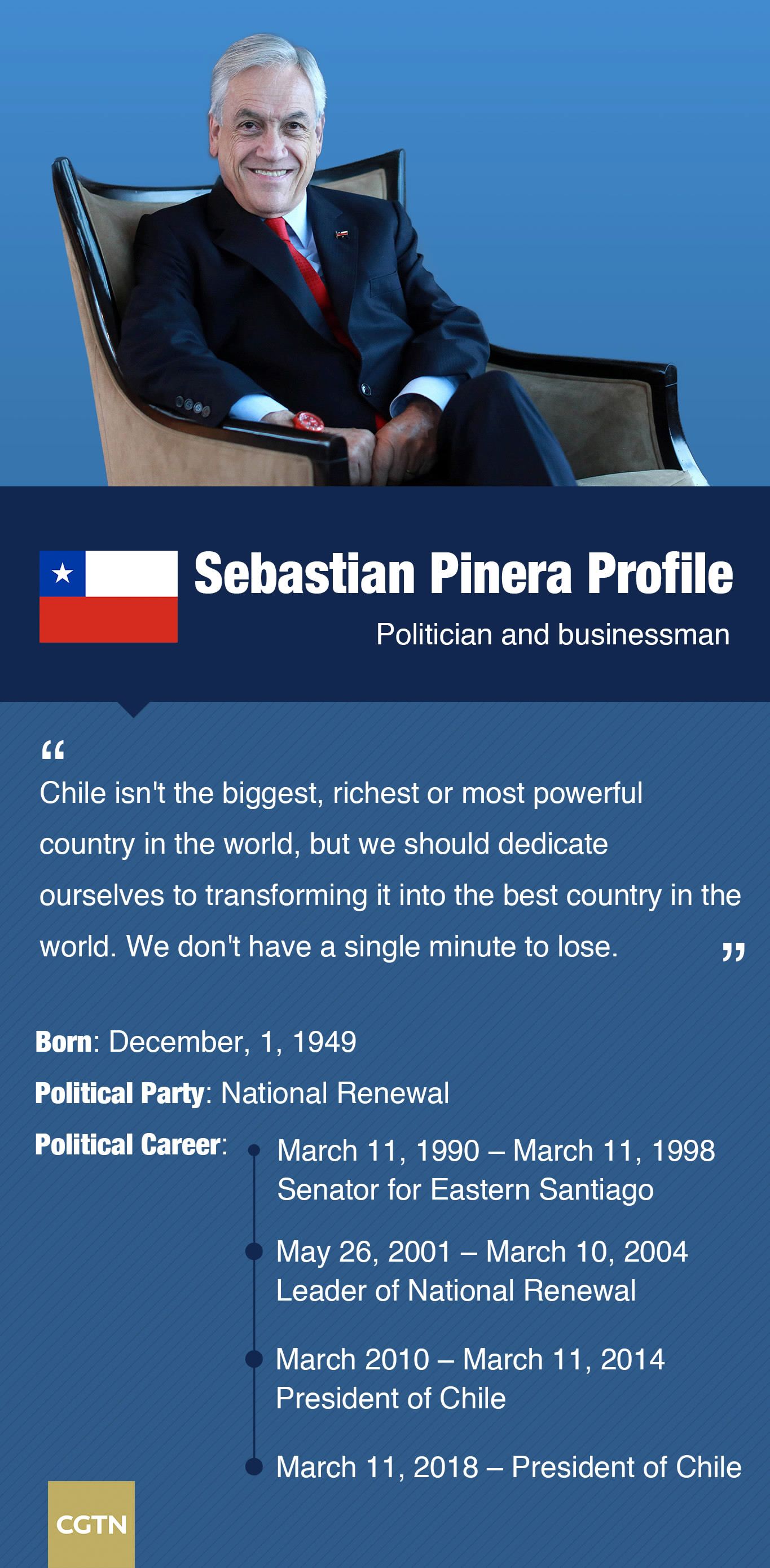Chile's President-elect Sebastian Pinera is set to have his second inauguration ceremony on Sunday, four years after leaving office
The recently-elected Pinera has already been president, serving a term in 2010 to 2014. Chile's constitution does not allow consecutive presidential terms, but a former president can run for the office again, just not while the person is a sitting president.
The conservative billionaire then won last December's presidential runoff to start his second term.
Harvard-trained billionaire
The 68-year-old Pinera held a Harvard Ph.D. in economics with an estimated personal fortune of around 2.7 billion US dollars, which ranked him 745th on last year's Forbes' global rich list.
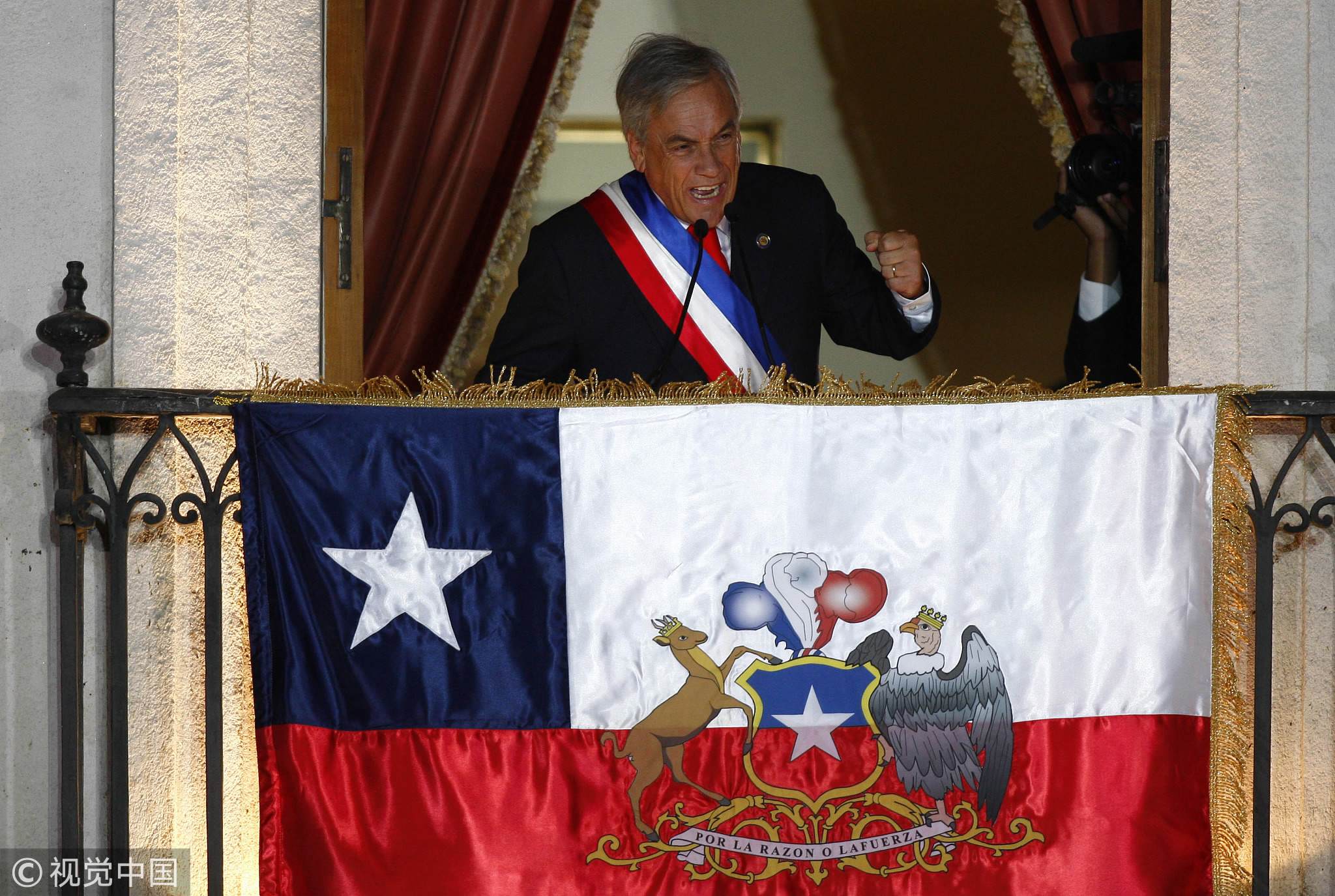
Chile's President Sebastian Pinera delivers a speech to his supporters from a balcony at La Moneda presidential palace on March 11, 2010 in Santiago, Chile. /VCG Photo
Chile's President Sebastian Pinera delivers a speech to his supporters from a balcony at La Moneda presidential palace on March 11, 2010 in Santiago, Chile. /VCG Photo
His fortune was mainly made in the 1980s when he introduced credit cards to the country.
He also invested in Chile's biggest airline company Lan Chile, the country's top football club Colo Colo and owned 90 percent of a local television channel.
'We don't have a single minute to lose'
During his victory speech in 2010, Pinera urged, "We don't have a single minute to lose," and promised to apply his business experience to governing.
His first administration was marked by a vibrant economy, especially his rebuilding efforts after the 7.2-magnitude earthquake, which rocked the country several days before Pinera began his term.
However, his most remarkable moment may be the rescue of 33 miners who were trapped 700 meters underground for 69 days in 2010.
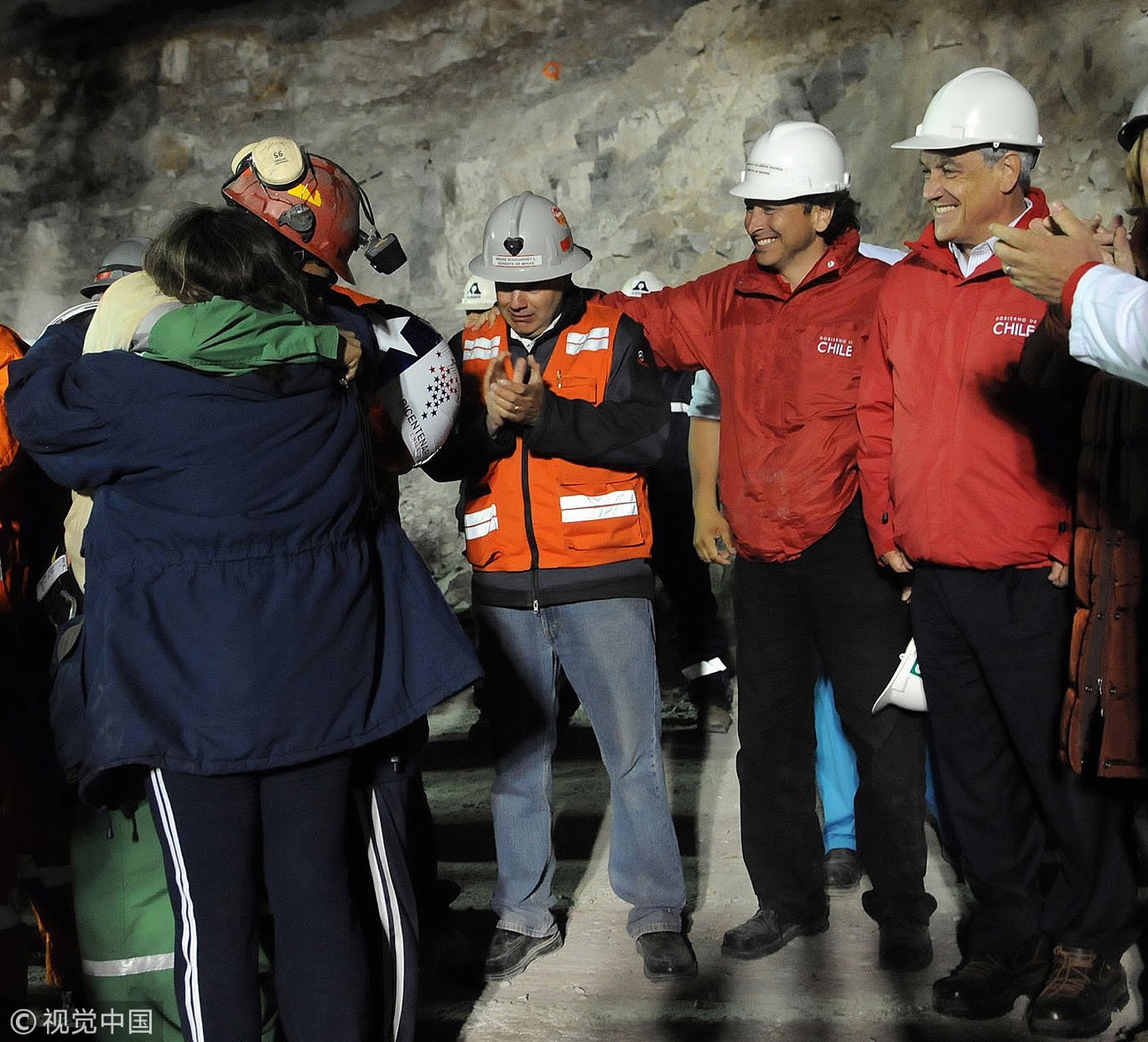
The first miner Florencio Avalos (left), one of the 33 trapped miners, hugs his wife and son as Chilean President Sebastian Pinera, his wife, and Mining Minister Laurence Golborne look on after Avalos' rescue from the San Jose mine, near Copiapo, Chile, on October 13, 2010. /VCG Photo
The first miner Florencio Avalos (left), one of the 33 trapped miners, hugs his wife and son as Chilean President Sebastian Pinera, his wife, and Mining Minister Laurence Golborne look on after Avalos' rescue from the San Jose mine, near Copiapo, Chile, on October 13, 2010. /VCG Photo
Although he has great support from the business community, Pinera has faced protests from thousands of students who seek an education overhaul.
Pinera is also the first conservative president since the country ended military rule in 1990.
Return to office, return to right
As Pinera about to start his second term, he and the current President Michelle Bachelet have traded the presidency between them for 16 years.
During last November's first round election, center-right Pinera won 36 percent of the vote against his opponent, Alejandro Guillier, which was the weakest result for a center-left candidate since 1990.
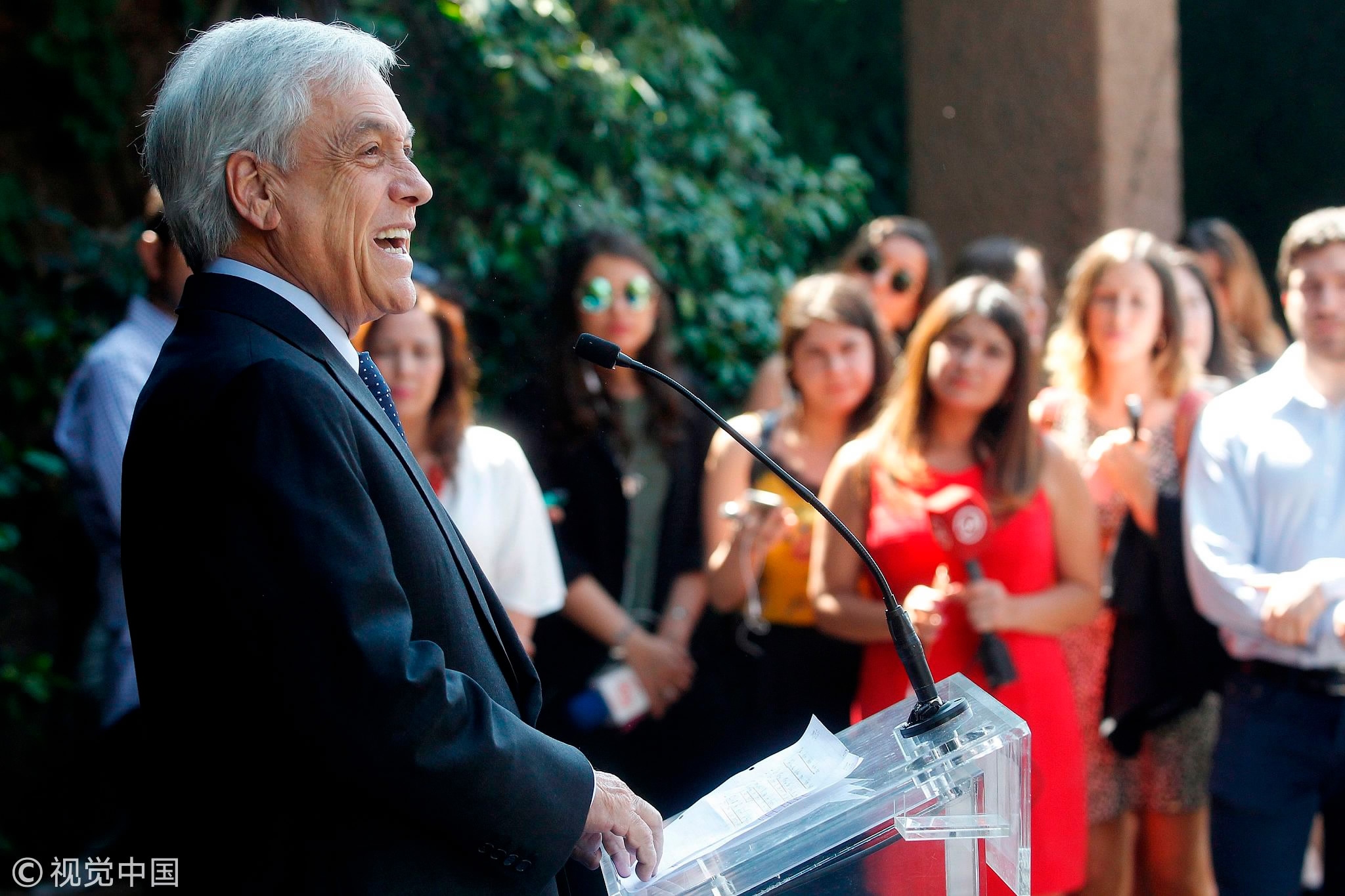
Chilean president elect Sebastian Pinera speaks during a press conference following a meeting with Chilean President Michelle Bachelet (not in frame) at his residence in Santiago on December 18, 2017. /VCG Photo
Chilean president elect Sebastian Pinera speaks during a press conference following a meeting with Chilean President Michelle Bachelet (not in frame) at his residence in Santiago on December 18, 2017. /VCG Photo
When the center-left President Bachelet suffered from the public's disapproval on his failure to fulfill a campaign promise to reform labor and education, Pinera captured the chance, promising to rein in the reforms and promised to make the country become the first "developed nation" in Latin America by 2025.
Meanwhile, Pinera learned from his previous term and reversed his stance on the expansion of free higher education – a Bachelet policy which he had previously criticized.
With 54.57 percent ballots in the second round of voting, Pinera recaptured the presidential seat. His victory marked another shift to the political right in the region in recent years following Peru, Argentina and Brazil.

